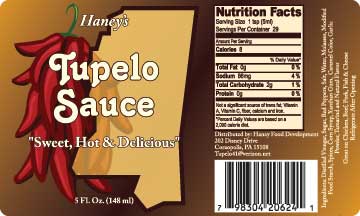
- Name of food
- Net quantity of contents
- Name and address of the food company
- List of ingredients
Food businesses may choose to display all food information on a single label, or may choose to have two distinct label areas on the container, the principal display area, and the information panel. The PDP is the portion of a food package that is most likely to be seen by the consumer at the time of purchase. It is usually located on the front and shows the name of the product and the net contents of the container. Styling and character size must be approved before being sent for printing.
Food manufacturers must then list all food ingredients present in the packaged food, as long as there are two or more ingredients used in the product. Ingredients need to be listed in descending order (ingredients that weigh the most listed first and ingredients weighing the least listed last). Analysis of ingredients must be completed by the food manufacturing business before printing can begin.
According to federal regulations, large food manufacturers must also display nutritional information on the label. However, small businesses with fewer than 100 full-time equivalent employees that produce fewer than 100,000 units of product per recipe per year are exempt from nutrition labeling, unless a health or nutrient claim is made. Nutrition information must be presented on a per-serving basis (the typical weight or number of pieces eaten) and must include calories, total fat, cholesterol, sodium, carbohydrates, protein, vitamins A and C, calcium and iron. To obtain this specified information, all food products must be tested in a commercial lab, calculated on a nutrition label software, or figured by a consultant.
To be sure food labels comply with all regulations and requirements, food and beverage businesses may seek verification from a Department of Agriculture sanitarian or the FDA small business representative in their region before sending the final food label on to be printed. For food businesses, this can be a lengthy and tedious process, but the benefit is that the consumer has accurate information and a product that is safely regulated. The state where the product is being processed determines if there are any additional regulations to be followed.
For more information on the process of creating your food label or taking the step to actually print it for your packaging, contact Louisville Label and we will help you through the process of approving and printing your food label.

